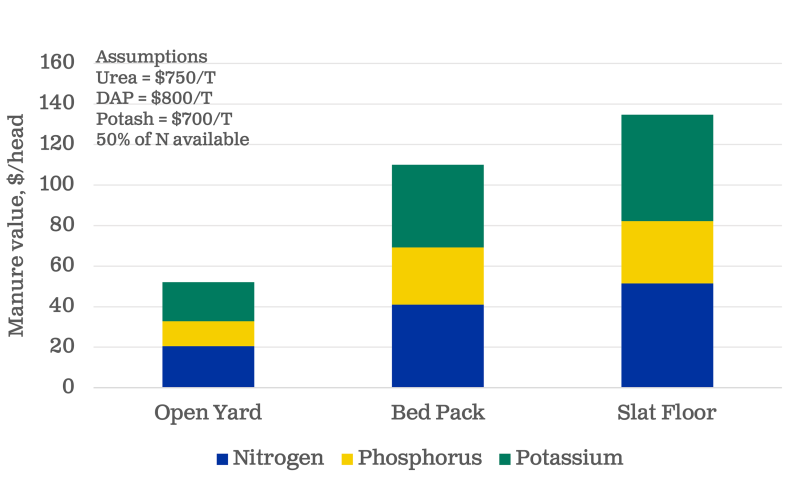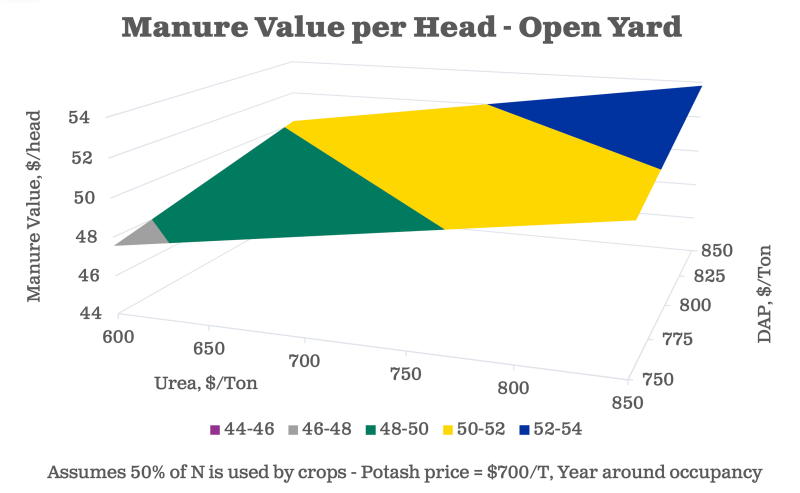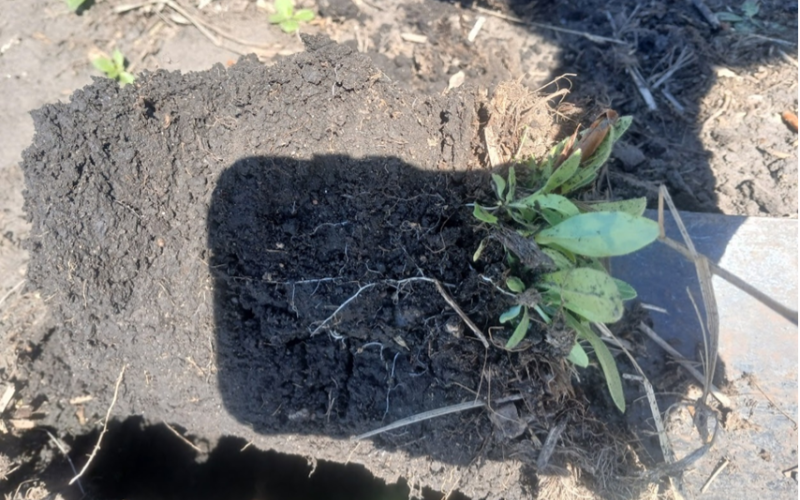
If you were to ask 100 feeders how they assess profitability of cattle feeding, that discussion would be dominated by talk about breakevens, cost of gain and profit/loss on a pen closeout. Adding value to farm-raised crops might come up, especially if the price of grain is low. If manure enters the discussion at all, it is usually only in the context of yardage costs, labor demands and bedding expense.
However, that approach overlooks opportunities to reduce system costs for integrated livestock-crop enterprises. Livestock waste can be a valuable source of crop nutrients when correctly managed. Figure 1 shows the nutrient value of manure per head of capacity for three different beef housing systems. These values assume that the feedlot is full year-round and that 50% of manure Nitrogen (N) is available for crop growth. Manure production estimates were taken from the Iowa State University Beef Feedlot Systems Manual.

Using the price assumptions shown, a 999-head beef facility would generate approximately $52,000, $110,000 and $135,000 worth of crop nutrients for an open yard, bed-pack or slat-floor barn, respectively. Figure 2 shows how these values could change based on fertilizer costs for an open yard. Confinement systems that capture greater proportions of manure value, such as bed pack or slatted floor facilities, would show a similar pattern. Regardless of housing systems used, integrating livestock into a crop enterprise provides a competitive advantage through reducing input costs, especially during periods with high fertilizer costs.
If cattle feeders are going to capitalize on this resource, they need to make sure they do not treat manure, well… like manure. Often manure is hauled to the closest fields to minimize disposal costs and make more “efficient” use of time. However, taking a more strategic approach to manure application will increase the value of manure as part of the overall system.
Manure Application Tips
Test.
The only way to reliably determine manure composition and nutrient value is to test it. Manure is highly variable depending on amount of bedding, diets fed to the livestock, degree of N loss during storage, dry matter content of the manure and other factors. Representative samples and accurate lab analysis will allow for more-precise application.
Prioritize target fields.
Fields should be chosen based on soil fertility test levels and prior field history. Applying manure is an effective way add back organic matter that had been removed, whether from silage harvest or crop residue removal. Avoiding fields with an extensive history of manure application will place crop nutrients where they will be more effective and reduce any negative effects of prior over-application.
Reduce risk of loss.
Selecting fields with less risk of nutrient losses, whether from leaching in sandy soils or from runoff on steeper slopes, will keep crop nutrients where they can benefit crop reduction rather than moving to areas. Knifing in liquid manure or incorporating solid manure, when possible, reduces nutrient volatilization.

